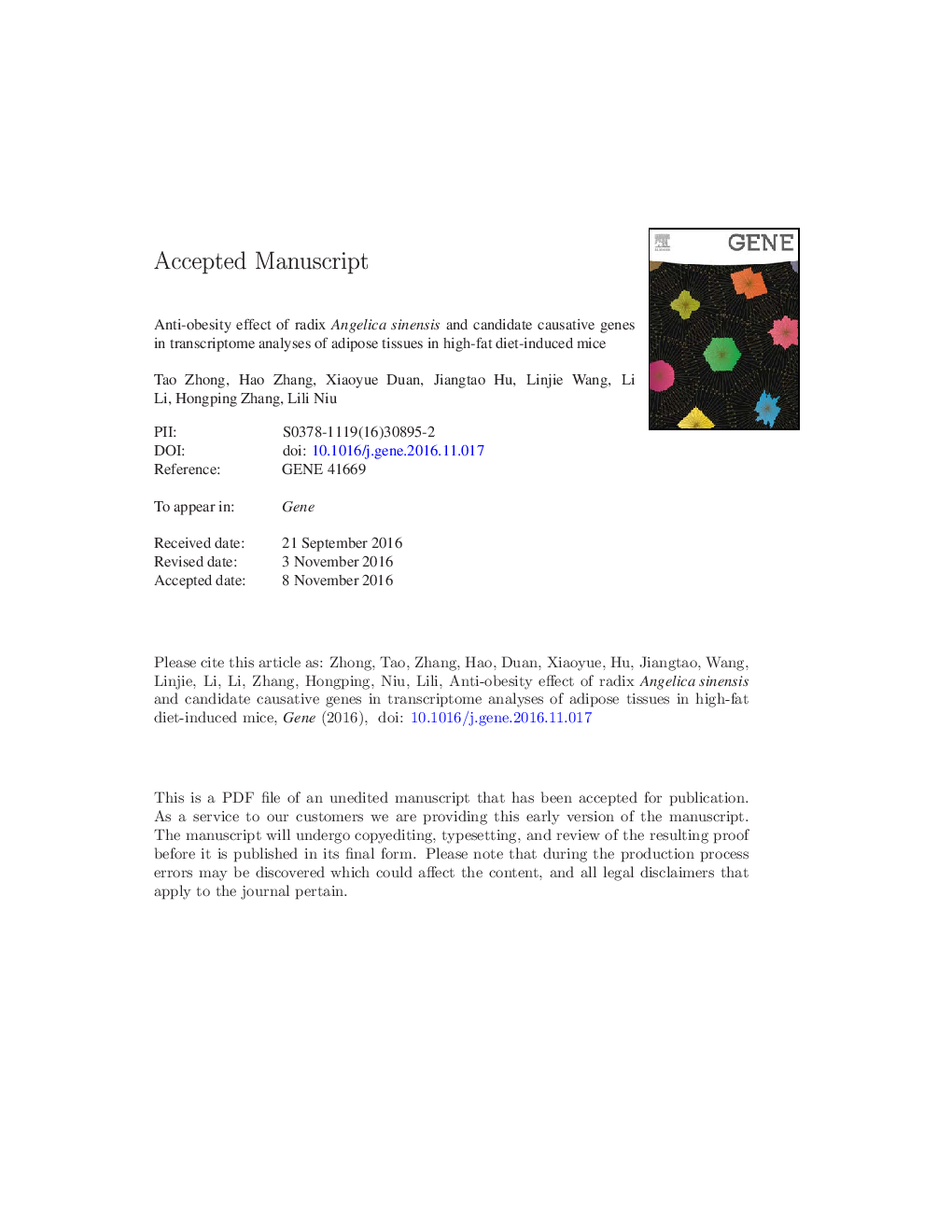| Article ID | Journal | Published Year | Pages | File Type |
|---|---|---|---|---|
| 5589890 | Gene | 2017 | 34 Pages |
Abstract
We have previously reported that radix Angelica sinensis (RAS) suppressed body weight and altered the expression of the fat mass and obesity associated (FTO) gene in mice with high fat diet (HFD)-induced obesity. In the present study we performed RNA sequencing-mediated transcriptome analysis to elucidate the molecular mechanisms underlying the anti-obesogenic effects of RAS in mice. The results revealed that 36 differentially-expressed genes (DEGs) were identified in adipose tissues from the RAS supplementation group (DH) and control group (HC). These 36 DEGs were clustered into 297 functional gene ontology (GO) categories, among which several GO annotations and signaling pathways were associated with lipid homeostasis. Six out of the 36 DEGs were identified to be involved in lipid metabolism, with the APOA2 gene a potential anti-obesogenic influence. The expression pattern revealed by RNA-Seq was identical to the results of quantitative real-time PCR (qPCR). Therefore, RAS supplementation in HFD-induced obese mice was associated with an anti-obesogenic global transcriptomic response. This study provides insight into potential applications of RAS in obesity therapy.
Keywords
qPCRfragments per kilobase of transcript per million fragments mappedME1ApoA2PCK1FPKMMalic enzyme 1PNPLA3Radix Angelica sinensisHFDDEGsRASFDRTCMsApolipoprotein A-IITranscriptomeChinese herbal medicinesKEGG یا Kyoto Encyclopedia of Genes and Genomes Kyoto Encyclopedia of Genes and Genomeshigh-fat dietRINRNA Integrity Numberphosphoenolpyruvate carboxykinase 1ObesityMicefalse discovery ratequantitative real-time PCRAdiposeCidea
Related Topics
Life Sciences
Biochemistry, Genetics and Molecular Biology
Genetics
Authors
Tao Zhong, Hao Zhang, Xiaoyue Duan, Jiangtao Hu, Linjie Wang, Li Li, Hongping Zhang, Lili Niu,
